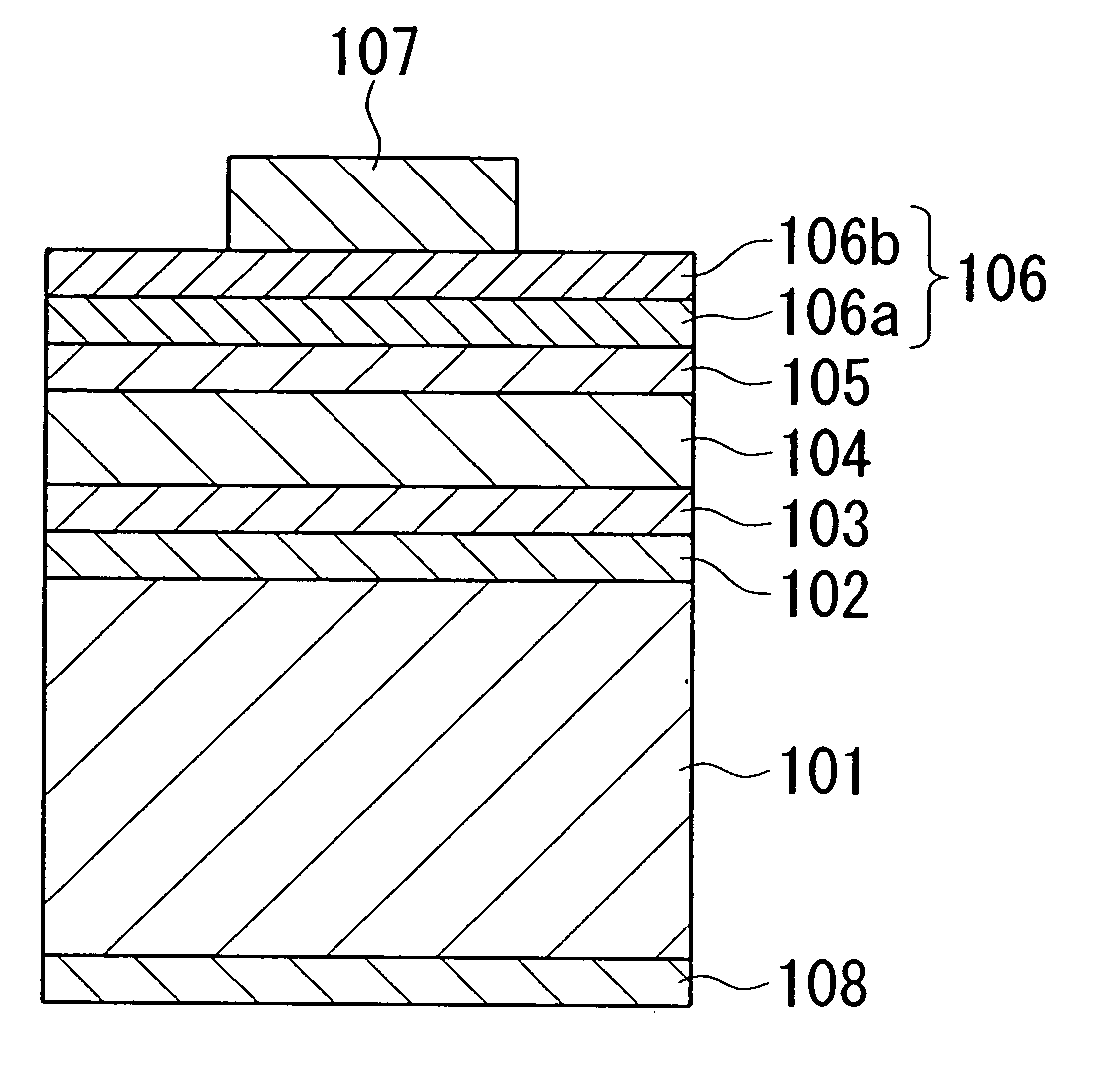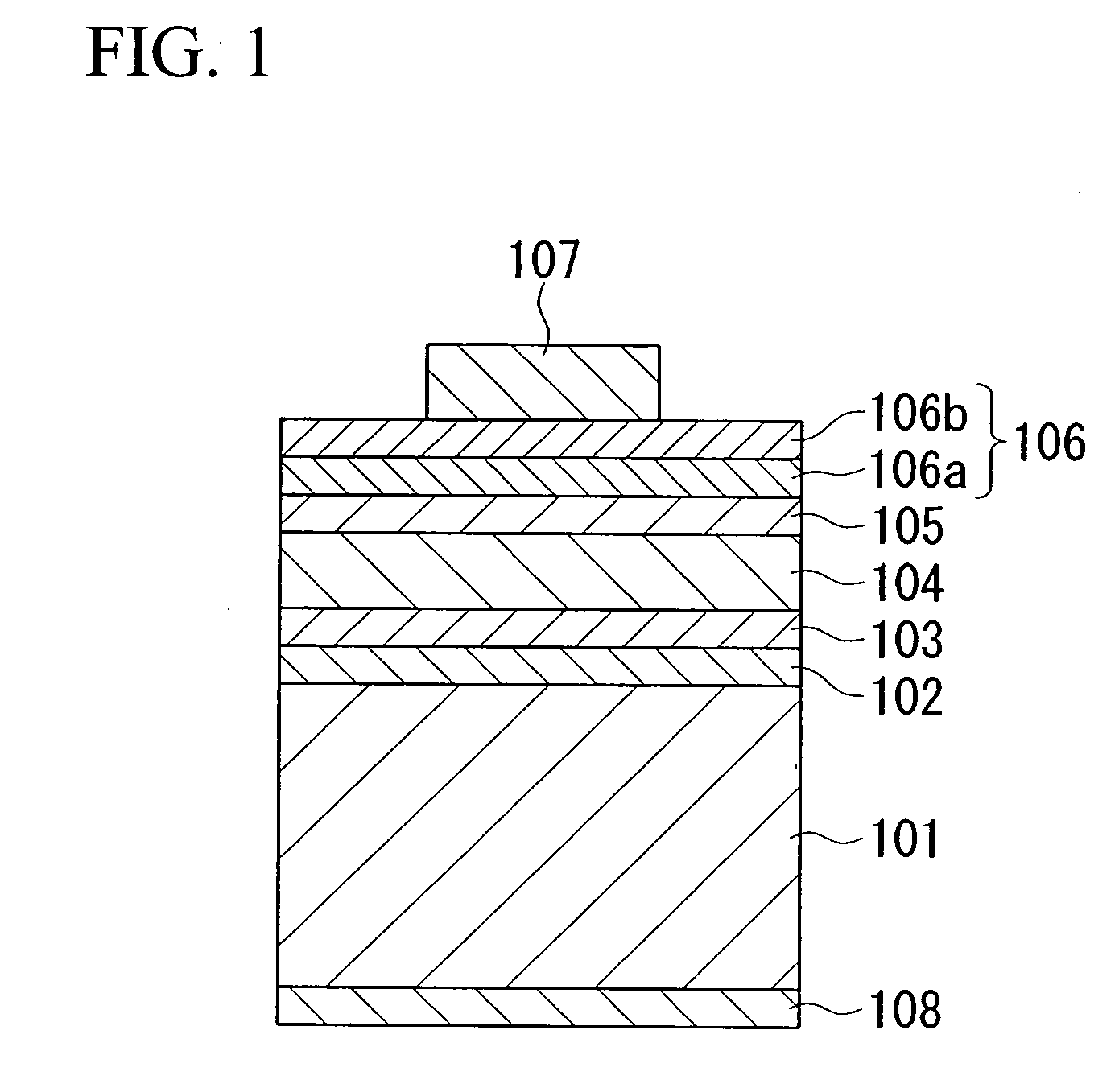Boron phosphide-based compound semiconductor device, production method thereof and light-emitting diode
a technology of compound semiconductor devices and boron phosphide, which is applied in the direction of semiconductor devices, basic electric elements, electrical equipment, etc., to achieve excellent device performan
- Summary
- Abstract
- Description
- Claims
- Application Information
AI Technical Summary
Benefits of technology
Problems solved by technology
Method used
Image
Examples
example
[0070] As the boron phosphide-based compound semiconductor device of the present invention, a light-emitting diode (LED) having a pn-double heterojunction (DH) structure comprising a boron phosphide-based compound semiconductor layer consisting of an amorphous layer and a polycrystal layer vapor-grown on an Si single crystal substrate was produced. FIG. 1 schematically shows the cross-sectional structure of LED produced.
[0071] As the substrate 101, a phosphorus (P)-doped n-type (111)-Si single crystal substrate was used.
[0072] First, an undoped boron phosphide (BP) amorphous layer 102 was deposited on the (111)-surface of the substrate 101 by an atmospheric pressure (nearly atmospheric pressure) metal-organic vapor phase epitaxy (MOVPE) method. The boron phosphide amorphous layer 102 was deposited at 450° C. by using triethylborane ((C2H5)3B) as the boron source and phosphine (PH3) as the phosphorus source. The ratio (PH3 / (C2H5)3B; V / III ratio) of the concentration of phosphorus s...
PUM
| Property | Measurement | Unit |
|---|---|---|
| temperature | aaaaa | aaaaa |
| temperature | aaaaa | aaaaa |
| band gap | aaaaa | aaaaa |
Abstract
Description
Claims
Application Information
 Login to View More
Login to View More - R&D
- Intellectual Property
- Life Sciences
- Materials
- Tech Scout
- Unparalleled Data Quality
- Higher Quality Content
- 60% Fewer Hallucinations
Browse by: Latest US Patents, China's latest patents, Technical Efficacy Thesaurus, Application Domain, Technology Topic, Popular Technical Reports.
© 2025 PatSnap. All rights reserved.Legal|Privacy policy|Modern Slavery Act Transparency Statement|Sitemap|About US| Contact US: help@patsnap.com


